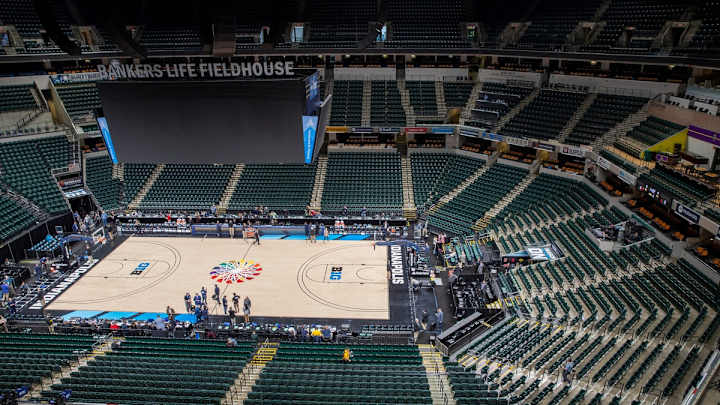As College Football Wobbles, Is Basketball Watching?

A college basketball season seems far away, but it's really not.
College football is proving that this week as it wobbles toward making on a decision on when and how or if to start its season in the midst of the COVID-19 pandemic.
The Big Ten announced on Tuesday that the fall sports schedule, including football, was postponed, instead banking on the possibility of a spring season. Every Power 5 conference is waiting to see what the other is going to do.
A report on Tuesday morning that the Big Ten had a contentious meeting over what was described as one of the first conversations into how to prepare for a spring season was a perfect example of just how far down the road this can has been kicked without any thought of the future.
That can't happen to college basketball.
The NCAA was forced to cancel its men's and women's tournaments in March because of the pandemic. It can't afford another lost season.
It's not just an NCAA problem, although the organization has much more control over basketball than it does football. The Big Ten and the rest of the conferences must be making their own plans as well.
And, even with the debate on whether there will be a football season, planning for the winter seasons has to start now.
The health concerns from the virus aren't going away. They will still be there in October, when men's and women's college basketball teams are scheduled to begin practice.
It is true that the virus makes any long-term plans unpredictable.
It made short-term plans unpredictable in March. On a Sunday, we're watching Iowa and Illinois play in Champaign in the last regular-season game. On the following Thursday, we're in an empty arena listening to Big Ten commissioner Kevin Warren explain why there would be no completion of the conference's men's basketball tournament, and by the end of the day the remainder of the winter seasons and all of the spring seasons were gone as well.
Now, even with college football schedules in hand, that season looks tenuous.
The inability to predict what is coming next makes it difficult to make one plan and stick to it. And that's why the college basketball decision-makers better be watching how college football is botching this process.
The discussions that have been held and will continue in college football need to be a blueprint for basketball, even if the lessons are what not to do.
Do college teams start the season later, cramming more games into that December-January window when most campuses will be empty of other students? Do teams play in their own arenas, or do conferences or regions go into a "bubble" format that is working in the NBA and NHL? Do teams play a conference-only schedule?
Football, and other fall sports, have the fall-back of spring, although those present different challenges. Basketball, and the winter sports, have less of a window to push things back.
The talk right now is football, and that's understandable. But it's also a sign that poor planning over the last few months have caused us to reach this point.
But basketball is on the clock, even if it feels like it. There must be more than Plans A, B and C. At this point, it might be advisable to start thinking about a Plan Q.
The best way to avoid an October disaster is to start thinking about the what-ifs now.

I was with The Hawk Eye (Burlington, Iowa) for 28 years, the last 19-plus as sports editor. I've covered Iowa basketball for the last 27 years, Iowa football for the last six seasons. I'm a 17-time APSE top-10 winner, with seven United States Basketball Writers Association writing awards and one Football Writers Association of America award (game story, 1st place, 2017).
Follow johnbohnenkamp